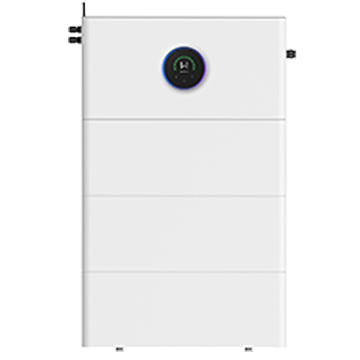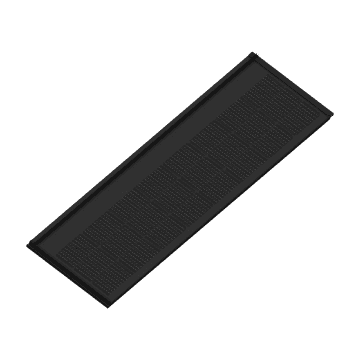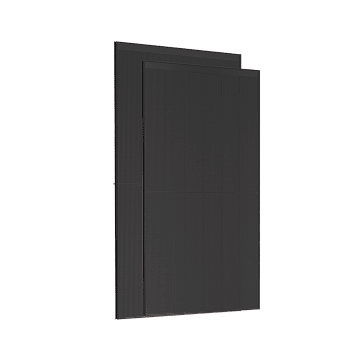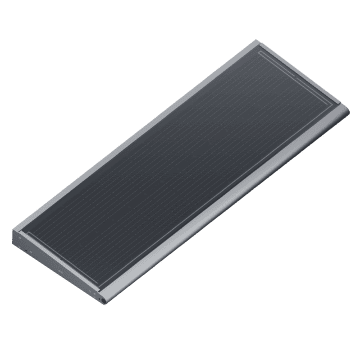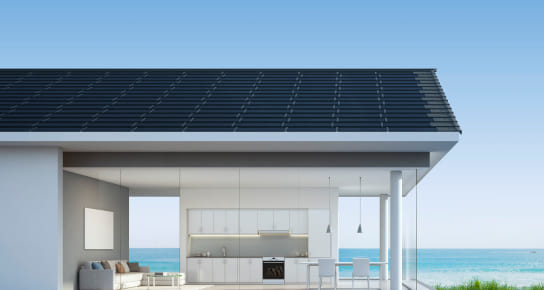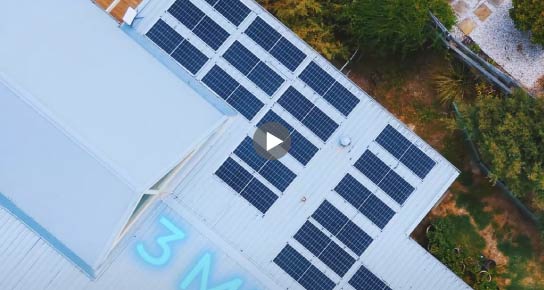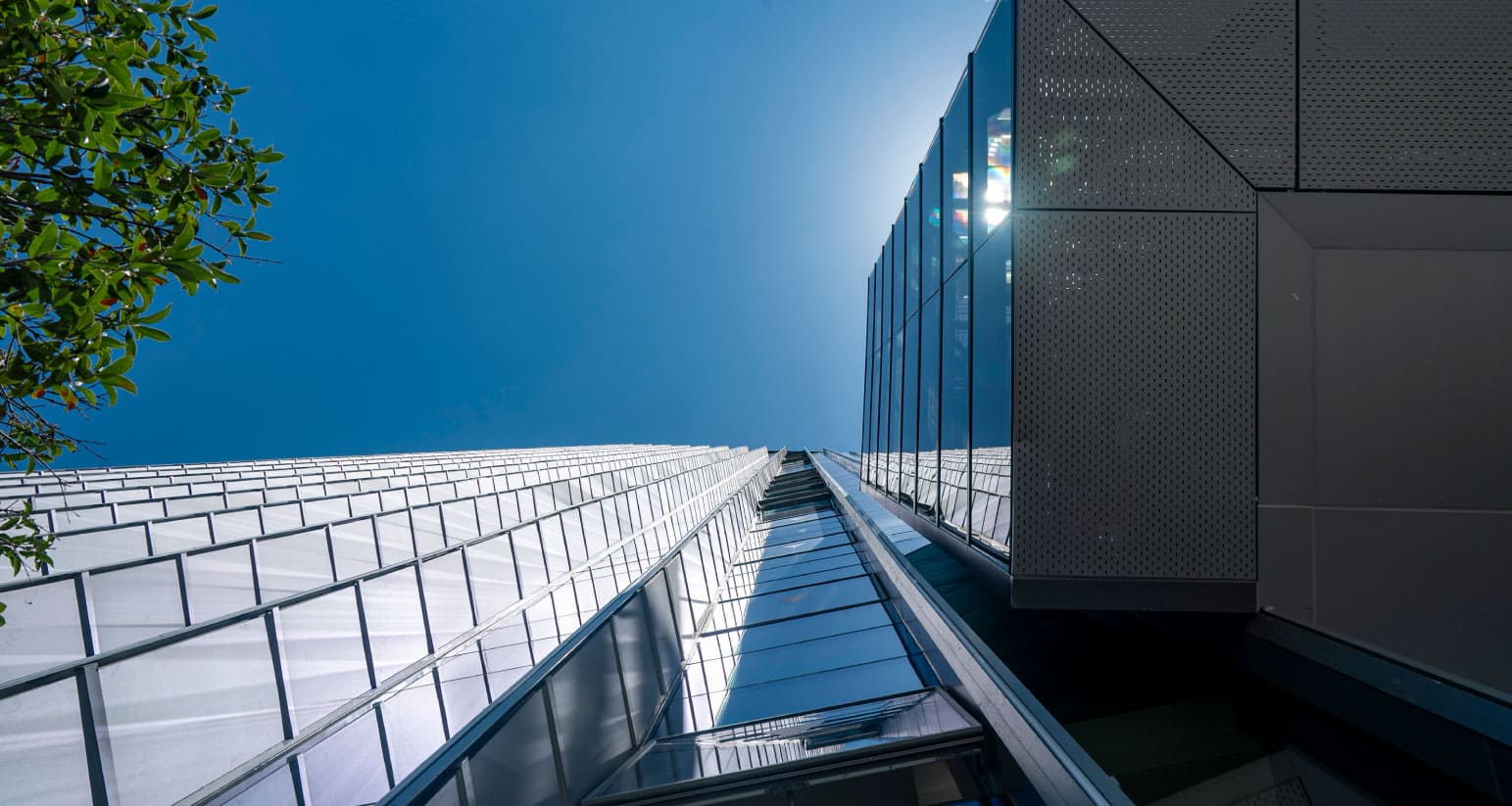Stellar Series--Empowering Curtain Walls
January 09, 2025
The Growing Demand for Functional Curtain Walls
Curtain walls, as a crucial element of modern architecture, not only enhance the visual appeal of buildings but also offer exceptional energy-saving and safety features. Statistics indicate that the construction industry accounts for approximately 40% [1] of global energy consumption annually. By incorporating insulation and shading functionalities, curtain walls can significantly reduce a building's energy usage, contributing directly to carbon neutrality goals.
The adoption rate of curtain walls in high-rise commercial buildings has surpassed 65% [2], and this trend continues to rise, particularly in regions with strict energy regulations, such as Europe and North America. Functional curtain walls are no longer a choice but a necessity in modern construction.
Traditional Solutions to Improve Energy Performance for Buildings with Curtain Walls
In traditional curtain wall design, vertical shading is a common solution. By installing vertical shading components on building facades, sunlight is blocked at specific angles, thereby reducing indoor heat accumulation and glare. This design contributes to enhancing the building's exterior appearance and partially reducing indoor cooling demands. However, traditional vertical shading has a single function and cannot harness solar energy for power generation, offering only limited benefits in improving the building's overall energy performance.
GoodWe Stellar-Vertical Sunshade: PV Solution for Curtain Walls
GoodWe's Stellar-V product meets the growing demand for multifunctional curtain walls by offering vertical shading solutions that combine the benefits of solar shading with photovoltaic energy generation.
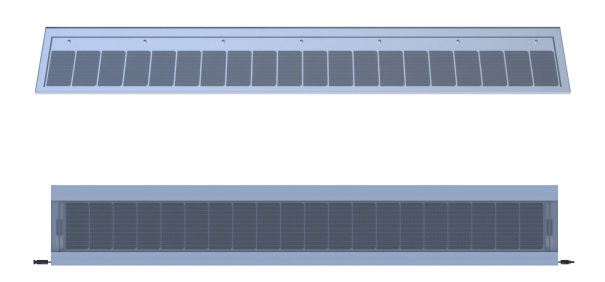
What sets the GoodWe Stellar-V products apart is their ability to support customized dimensions and color options, allowing for seamless integration with the building's existing design. For different types of curtain walls, the installation methods for the nodes can also be further refined. Below are some detailed installation node design drawings of a commercial building.
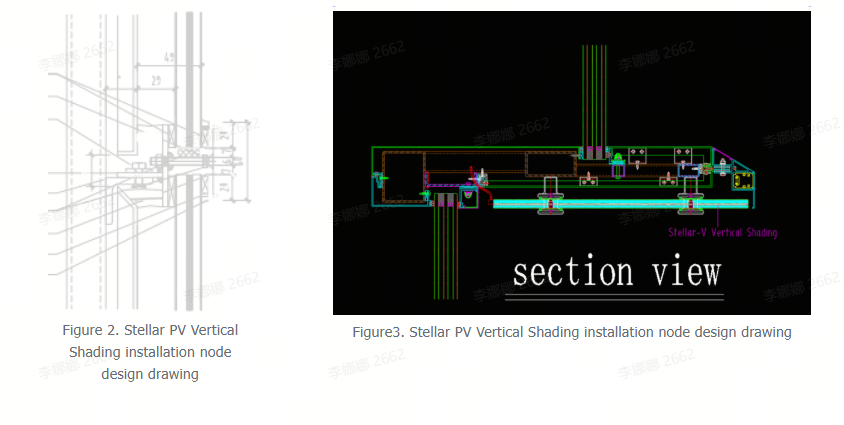
This makes GoodWe Stellar-V products the ideal solution for transforming curtain walls from purely aesthetic elements into fully functional, energy-efficient systems.
Application of Stellar-V Shading in Commercial Buildings
As shown in Figure 2, the Stellar-V solar panels are installed on the southeast and west sides of the commercial building.
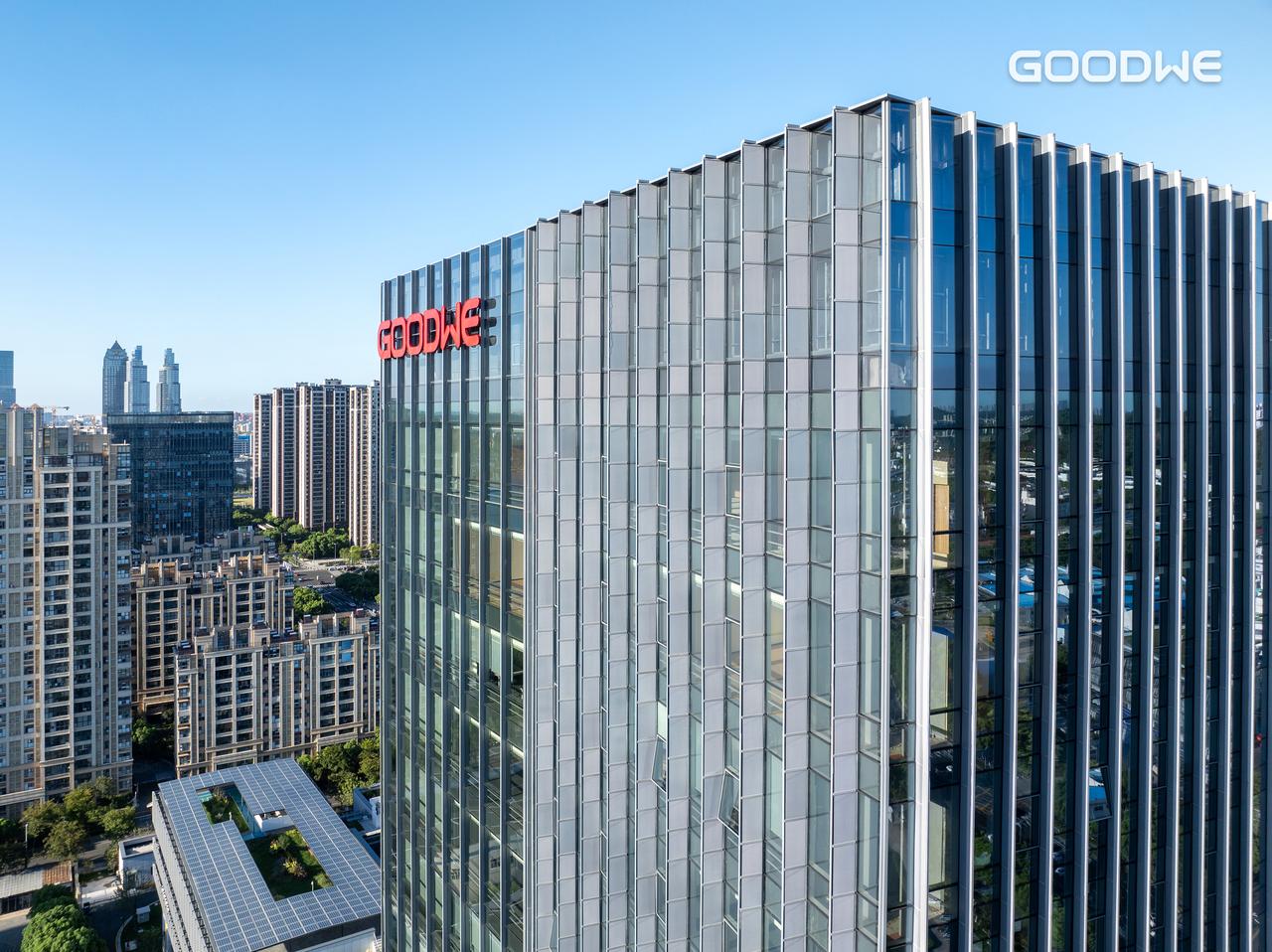
Figure 4. The actual layout of Stellar-V on the building
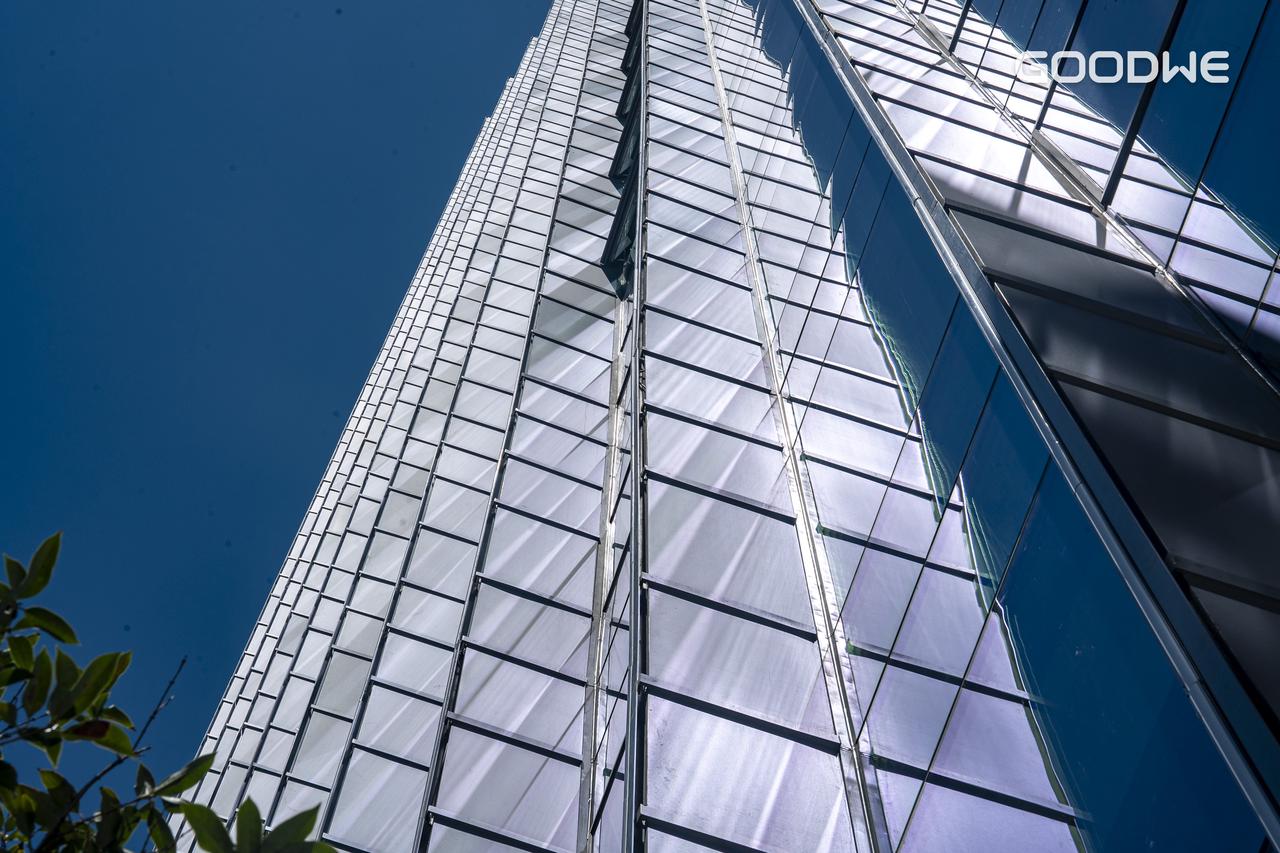
Figure 5. The actual layout of Stellar-V on the building
4.1 Efficient Use of Building Facades with Exceptional Energy Output
Unlike traditional photovoltaic systems that are predominantly installed on rooftops, Stellar-V vertical PV shading maximizes the use of building facades, converting otherwise underutilized surfaces into productive energy sources.
Building Specifications: This 19-story commercial building, standing 89.6 meters tall, features a total facade area of 21,254.06 m², far exceeding the usable rooftop area of 6,875.36 m².
Solar Potential: Simulations (as shown in figure 3) show that the building's east, south, and west facades receive an annual solar irradiation of over 466 kWh/m².
Energy Output: Equipped with 2,579 Stellar-V panels covering 1,723 m², the system generates an annual energy output of 59,000 kWh. Utilizing advanced Topcon cell technology, the panels achieve a theoretical maximum power output of 204 W/m², with generation capabilities on both front and rear surfaces.
4.2 Optimized Solar Energy Utilization
GoodWe stellar vertical PV shading systems are designed to optimize energy generation by considering the orientation and tilt angle of facades. This makes them particularly effective in high-latitude locations or during low-angle sunlight periods, such as mornings and evenings.
In this building, with an average annual sunshine duration of 1,600 hours, the vertical PV shading design increases facade solar efficiency by 10%-15% [3] throughout the year.
4.3 Seamless Integration with Architectural Style
The Stellar-V vertical shading system leverages aluminum-mimicking finishes to achieve a perfect balance between aesthetics and functionality.
Visual Harmony: The panels blend effortlessly with various architectural styles, from sleek modern glass facades to grand metallic exteriors, transforming shading systems into visually appealing design elements.Durability: The panels undergo specialized weather-resistant treatment, ensuring long-lasting color stability and maintaining their premium appearance under harsh conditions such as prolonged sunlight, rain, or snow.
4.4 Superior Shading and Glare Reduction
The shading coefficient (SC) is an effective metric for evaluating shading performance.

Performance Example: The south-facing vertical shading on this building achieves an SC of 0.133, meaning it blocks 13.3% of solar radiation throughout the day. This significantly reduces cooling energy demand during the summer.Urban Impact: The aluminum-mimicking finish absorbs light instead of reflecting it. It can minimize glare for pedestrians and surrounding areas, thereby contributing to a more harmonious urban environment.
4.5 Concealed Wiring Design and Optimization of Electrical System Integration
The Stellar-V vertical photovoltaic shading system uses a concealed junction box design, where both the junction box and wires are wrapped and protected by the frame. This ensures both aesthetic appeal and durability. In terms of electrical design, every 4 panels on the same side are grouped into a string, and two strings are connected in parallel to the inverter. Additionally, every 32 vertical shading units on the same side are connected to a single GW2000-MIS micro-inverter.
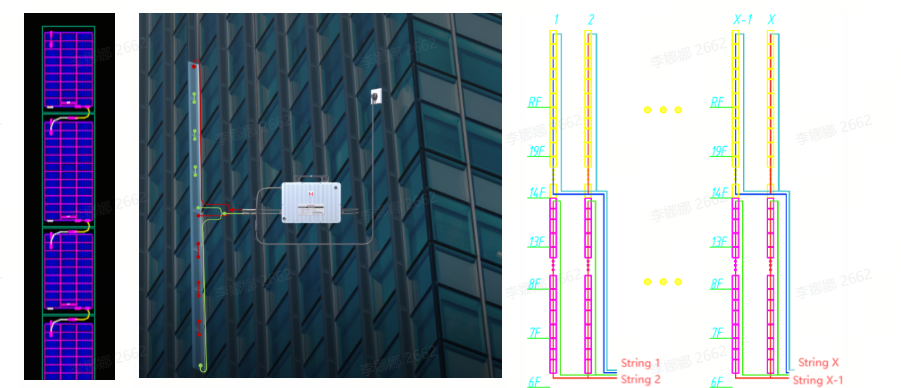
Conclusion
Vertical facade shading is a critical feature for high-rise buildings, offering substantial benefits in energy efficiency, thermal comfort, and material longevity. It meets the dual demand for aesthetics and functionality in modern architecture. By integrating photovoltaic technology into facade shading, these systems represent an innovative step toward sustainable building design, making them a cornerstone of future high-rise architecture.
Currently, GoodWe PVBM products span across regions focused on zero-carbon living, production, and transportation. Guided by our vision-"Solarise Every Building", GoodWe remains dedicated to developing innovative solutions so as to expand the scope of application and contribute to a sustainable, zero-carbon future.
Reference:
[1] UNEP, & Global Alliance for Buildings and Construction. (2021). 2021 Global Status Report for Buildings and Construction. Retrieved from https://globalabc.org/resources/publications/2021-global-status-report-buildings-and-construction
[2] CTBUH. "Curtain Wall Systems in High-Rise Buildings." Council on Tall Buildings and Urban Habitat. Accessed November 26, 2024. https://global.ctbuh.org.
[3]EnergySage. (2024). What's the best angle for solar panels? EnergySage. Retrieved from https://www.energysage.com

